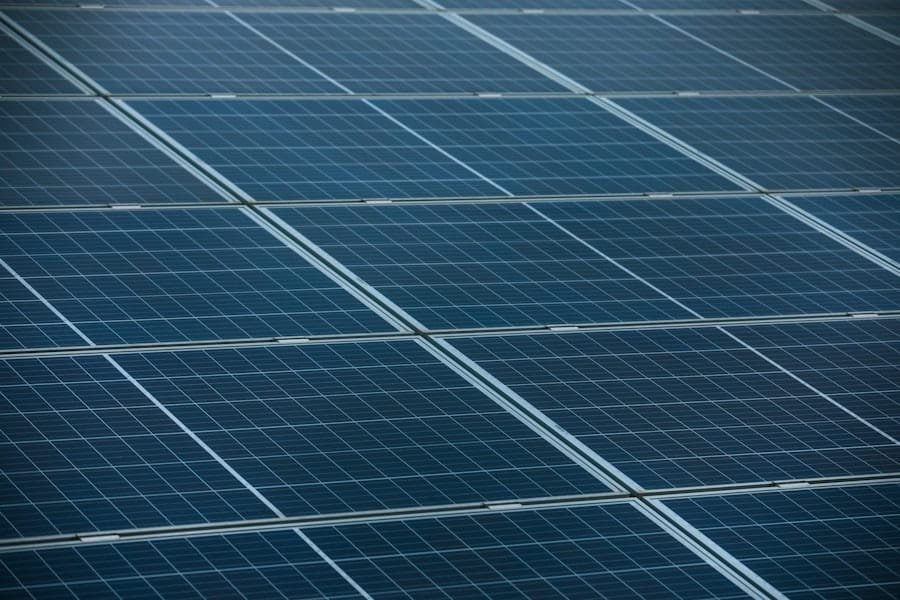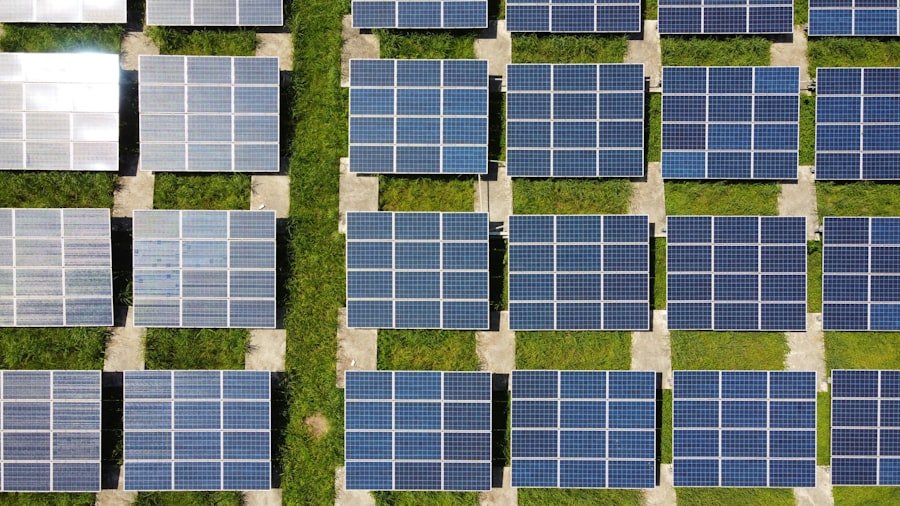The concept of zero-energy buildings (ZEBs) has gained significant traction in recent years, driven by the urgent need to address climate change and reduce greenhouse gas emissions. A zero-energy building is defined as a structure that produces as much energy as it consumes over the course of a year, effectively achieving a net-zero energy balance. This ambitious goal is realised through a combination of energy-efficient design, renewable energy generation, and innovative technologies.
As urbanisation continues to rise and the demand for sustainable living solutions increases, ZEBs represent a pivotal shift in how we approach building design and energy consumption. The emergence of zero-energy buildings is not merely a trend; it is a response to the pressing challenges posed by global warming and resource depletion. The construction and operation of buildings account for a substantial portion of global energy use and carbon emissions.
By transitioning to zero-energy buildings, we can significantly mitigate these impacts while also promoting energy independence and resilience. The journey towards ZEBs involves a multifaceted approach that encompasses architectural design, engineering, and the integration of renewable energy systems, all aimed at creating spaces that are not only environmentally friendly but also economically viable.
Summary
- Zero-energy buildings (ZEBs) are designed to produce as much energy as they consume, resulting in a net-zero energy usage.
- The principles of ZEBs include energy efficiency, renewable energy generation, and energy storage to achieve a balanced energy equation.
- Benefits of ZEBs include reduced energy costs, lower environmental impact, and improved indoor air quality and comfort for occupants.
- Challenges and limitations of ZEBs include high initial costs, limited availability of renewable energy sources, and the need for skilled professionals to design and maintain ZEBs.
- Examples of ZEBs include the Bullitt Center in Seattle, the Richardsville Elementary School in Kentucky, and the Research Support Facility at the National Renewable Energy Laboratory in Colorado.
The Principles of Zero-Energy Buildings
At the heart of zero-energy buildings lies a set of fundamental principles that guide their design and operation. The first principle is energy efficiency, which involves minimising energy consumption through thoughtful architectural design and the use of high-performance materials. This includes optimising insulation, utilising energy-efficient windows, and incorporating passive solar design strategies that harness natural light and heat.
By reducing the overall energy demand of a building, the reliance on renewable energy sources can be significantly decreased, making the goal of achieving net-zero energy more attainable. Another critical principle is the integration of renewable energy systems. ZEBs typically incorporate technologies such as solar photovoltaic panels, wind turbines, or geothermal heating systems to generate clean energy on-site.
The amount of renewable energy produced must be sufficient to offset the building’s energy consumption throughout the year. This requires careful planning and analysis to ensure that the energy generation capacity aligns with the building’s operational needs. Additionally, advancements in energy storage technologies, such as batteries, play a vital role in enabling ZEBs to store excess energy generated during peak production times for use during periods of low generation.
Benefits of Zero-Energy Buildings

The advantages of zero-energy buildings extend beyond their environmental impact; they also offer numerous economic and social benefits. One of the most significant advantages is the reduction in utility costs for occupants. By generating their own energy, ZEBs can drastically lower or even eliminate electricity bills, providing long-term financial savings.
This is particularly beneficial in regions where energy prices are volatile or on the rise. Furthermore, as governments increasingly implement carbon pricing mechanisms and incentives for renewable energy adoption, ZEBs can provide additional financial advantages through tax credits and rebates. In addition to economic benefits, zero-energy buildings contribute positively to occupant health and well-being.
The emphasis on natural light, improved indoor air quality, and thermal comfort creates healthier living and working environments. Studies have shown that occupants in energy-efficient buildings report higher levels of satisfaction and productivity compared to those in conventional structures. Moreover, ZEBs often incorporate green spaces and community areas that promote social interaction and enhance the overall quality of life for residents.
Challenges and Limitations of Zero-Energy Buildings
Despite their numerous benefits, zero-energy buildings face several challenges and limitations that can hinder their widespread adoption. One significant barrier is the initial capital cost associated with constructing ZEBs. While long-term savings on energy bills can offset these costs, the upfront investment required for high-performance materials, advanced technologies, and renewable energy systems can be prohibitive for many developers and homeowners.
This financial hurdle is particularly pronounced in regions where traditional building practices are deeply entrenched. Another challenge lies in the complexity of designing and constructing zero-energy buildings. Achieving a net-zero energy balance requires a high level of coordination among architects, engineers, contractors, and other stakeholders throughout the project lifecycle.
This collaborative approach can be difficult to implement, especially in projects with tight timelines or limited budgets. Additionally, there may be a lack of skilled professionals with expertise in ZEB design and construction, further complicating efforts to realise these ambitious projects.
Examples of Zero-Energy Buildings
Several exemplary zero-energy buildings around the world showcase the potential of this innovative approach to construction. One notable example is the Bullitt Center in Seattle, Washington, often referred to as the “greenest commercial building in the world.” Completed in 2013, this six-storey office building features an array of solar panels that generate more electricity than the building consumes annually. The Bullitt Center also incorporates rainwater harvesting systems, composting toilets, and extensive use of natural materials, demonstrating how ZEB principles can be applied in commercial settings.
Another inspiring case is the Bosco Verticale (Vertical Forest) in Milan, Italy. This residential complex consists of two towers adorned with over 9,000 trees and 20,000 plants, which not only contribute to energy efficiency but also enhance biodiversity within an urban environment. The design prioritises passive solar heating and cooling while integrating renewable energy sources such as solar panels.
The Bosco Verticale exemplifies how zero-energy principles can be harmoniously blended with aesthetic considerations to create vibrant living spaces.
The Role of Technology in Zero-Energy Buildings

Technology plays a crucial role in the realisation of zero-energy buildings by enabling more efficient energy management and generation systems. Smart building technologies are at the forefront of this transformation, allowing for real-time monitoring and control of energy consumption. For instance, advanced building management systems can optimise heating, ventilation, and air conditioning (HVAC) operations based on occupancy patterns and external weather conditions.
This level of automation not only enhances comfort but also ensures that energy is used judiciously. Moreover, innovations in renewable energy technologies are continually improving the feasibility of zero-energy buildings. Solar photovoltaic systems have become increasingly efficient and affordable over recent years, making them a popular choice for on-site energy generation.
Additionally, emerging technologies such as building-integrated photovoltaics (BIPV) allow solar panels to be seamlessly integrated into building materials like windows or facades, further enhancing aesthetic appeal while generating clean energy. As these technologies continue to evolve, they will play an integral role in advancing the zero-energy building movement.
Policy and Regulations for Zero-Energy Buildings
The successful implementation of zero-energy buildings is heavily influenced by policy frameworks and regulations at local, national, and international levels. Governments play a pivotal role in promoting ZEBs through incentives such as tax credits, grants, and subsidies for renewable energy installations or energy-efficient upgrades. Additionally, many countries have established building codes that mandate certain energy performance standards for new constructions or major renovations.
These regulations encourage developers to adopt sustainable practices while ensuring that buildings meet minimum efficiency criteria. In some regions, ambitious targets have been set for achieving net-zero energy in new buildings by specific deadlines. For example, California has implemented a statewide mandate requiring all new residential constructions to be zero-net-energy by 2020.
Such policies not only drive innovation within the construction industry but also signal a commitment to sustainability at a governmental level. However, effective policy implementation requires collaboration among various stakeholders, including government agencies, industry professionals, and community organisations.
The Future of Zero-Energy Buildings
Looking ahead, the future of zero-energy buildings appears promising as awareness of climate change continues to grow alongside technological advancements. As more architects and builders embrace sustainable design principles, we can expect an increase in innovative solutions that push the boundaries of what is possible in building performance. The integration of artificial intelligence (AI) into building management systems may further enhance energy efficiency by predicting usage patterns and optimising resource allocation in real-time.
Moreover, as urban areas expand and populations increase, there will be an increasing demand for sustainable housing solutions that prioritise both environmental responsibility and occupant comfort. Zero-energy buildings are well-positioned to meet this demand by offering a viable alternative to traditional construction methods that often prioritise short-term gains over long-term sustainability. As public awareness grows and policies evolve to support ZEB initiatives, we may witness a paradigm shift in how we conceptualise and construct our built environment.
In conclusion, zero-energy buildings represent a transformative approach to architecture that aligns with global sustainability goals while offering tangible benefits for occupants and communities alike. Through continued innovation in design practices, technology integration, supportive policies, and public engagement, ZEBs have the potential to redefine our relationship with energy consumption and pave the way for a more sustainable future.
Zero-energy buildings are becoming increasingly popular as companies strive to reduce their carbon footprint and energy costs. A related article on how private sector businesses are fuelling medical innovation highlights the importance of innovation in various industries, including the construction sector. By investing in sustainable building practices, companies can not only contribute to a greener future but also drive innovation in their respective fields.
FAQs
What is a Zero-Energy Building?
A Zero-Energy Building is a type of building that produces as much energy as it consumes over the course of a year, typically through the use of renewable energy sources such as solar panels and wind turbines.
How do Zero-Energy Buildings work?
Zero-Energy Buildings work by incorporating energy-efficient design, high-performance insulation, and renewable energy systems to minimize energy consumption and maximize energy production on-site.
What are the benefits of Zero-Energy Buildings?
The benefits of Zero-Energy Buildings include reduced energy costs, lower environmental impact, improved indoor air quality, and increased resilience to power outages and energy price fluctuations.
Are Zero-Energy Buildings cost-effective?
While the initial construction costs of Zero-Energy Buildings may be higher than traditional buildings, the long-term cost savings from reduced energy bills and potential incentives can make them cost-effective over time.
Are Zero-Energy Buildings suitable for all types of buildings?
Zero-Energy Buildings can be designed for various types of buildings, including residential, commercial, and industrial structures. However, the feasibility and cost-effectiveness may vary depending on factors such as location, building size, and energy usage.
